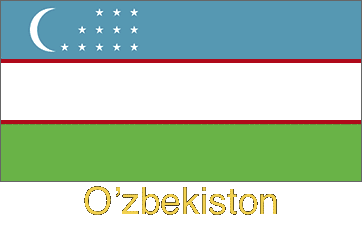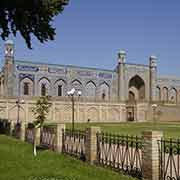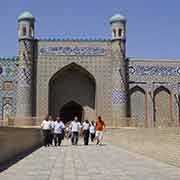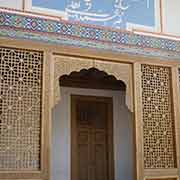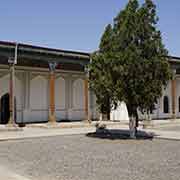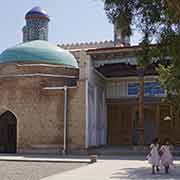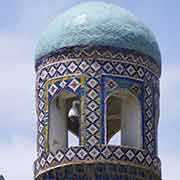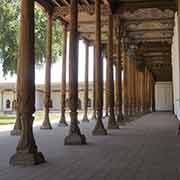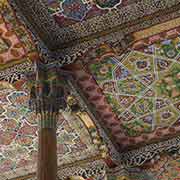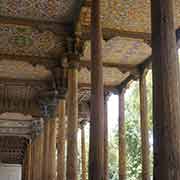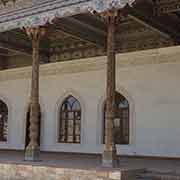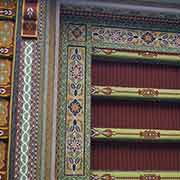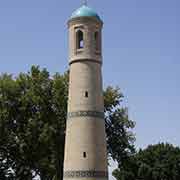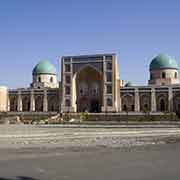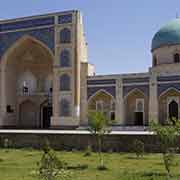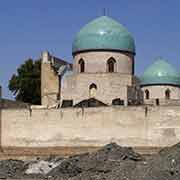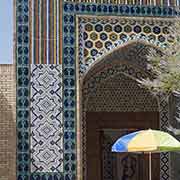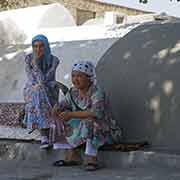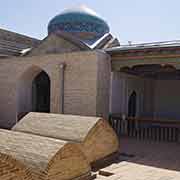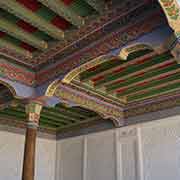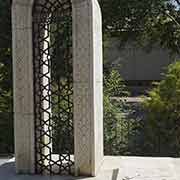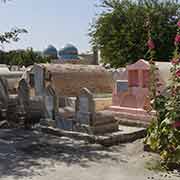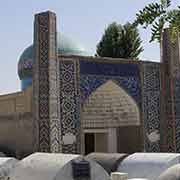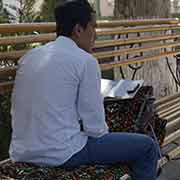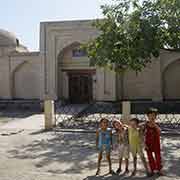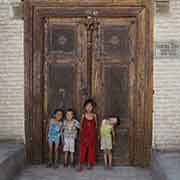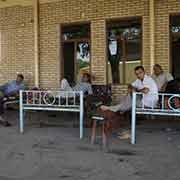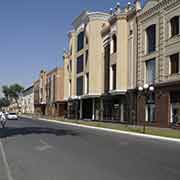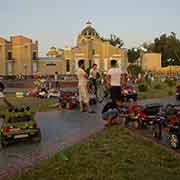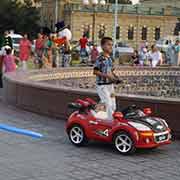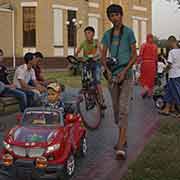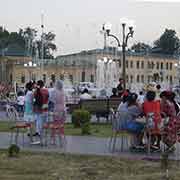Photos of Kokand, in the western Fergana Valley, Uzbekistan
Kokand, in the western Fergana Valley
Kokand (Qo‘qon in Uzbek) is a city at the southwestern edge of the Fergana Valley in eastern Uzbekistan. Its name derives from the well-known tribal family group of “Kokan” who belong to the Kongrat tribe of Uzbeks. It dates back at least until the 10th century, when it was named Khavakand; it was destroyed by Genghis Khan’s Mongols in the 13th century. The present city began in 1732 as a fort that was built on the site of an older fortress, Eski-Kurgan. The Khanate of Kokand was established in 1709 when Shahrukh Khan, ruler of the Uzbek Ming tribe, declared independence from the Khanate of Bukhara in the eastern part of the Fergana Valley with Andijan as its capital but in 1740 the capital was moved to the city of Kokand.
you may then send it as a postcard if you wish.
It reached its greatest territorial extend during the reign of Muhammad Ali (Madali Khan), who ruled from 1822 to 1842. During that time it included parts of modern Kyrgyzstan, eastern Uzbekistan and Tajikistan, and southeastern Kazakhstan. In 1839 a war with Bukhara broke out and in 1842 Bukhara’s forces under their leader Nasrullah Khan captured Margilan and killed Madali, who had fled there, and his whole family. Over the next two decades, a civil war raged in the khanate and there were Bukharan and Russian incursions. In 1865 the Russians conquered Tashkent and in 1868, a treaty was forced upon Kokand and turned it into a Russian vassal state. Its ruler, Khudayar Khan, who had ruled from 1845 (with an interlude by Emir Nasrullah between 1858 and 1865) was now powerless in his lavish palace; he was forced into exile in 1875 after revolts against his oppressive taxes and Russian rule. He was succeeded by his son, Nasir ad-din Abdul Karim Khan, who was resolutely anti-Russian, which provoked the annexation of Kokand: it was declared abolished with a statement by Russian Tsar Alexander II that he had been forced to “... yield to the wishes of the Kokandi people to become Russian subjects”. The former Khanate was incorporated into the Fergana Province of Russian Turkestan in 1883.
After the Russian Revolution the anti-Bolshevik Provisional Government of Autonomous Turkistan (also known as Kokand Autonomy) was proclaimed in December 1917 and the Kokand Autonomous State became independent under Mustafa Chokai-Beg. This coincided with rebellion against Russian rule throughout the Muslim areas of the Russian Empire. Although Lenin had advised “Muslim self-determination”, the authorities in Tashkent declared the Kokand Autonomy “counter-revolutionary” and on 30 January forces of the Tashkent Soviet laid siege to Kokand, whose population tried to defend themselves with hunting rifles. On 20 February the city fell and Soviet troops massacred at least 5,000 of the city’s population. Kokand was absorbed into the Turkestan Autonomous Soviet Socialist Republic and, in 1924, the Uzbek Soviet Socialist Republic.
Now Kokand is a pleasant city with almost 190,000 inhabitants. Its main sight is the Palace of Sayid Muhammad Khudayar Khan, that was built between 1863 and 1874 and was one of the largest and most opulent palaces in Central Asia. It had 113 rooms; 19 of those survive and host a museum. Another sight is the Jami mosque, built in 1800-1812, with its colourful decorated ceiling in the 100 metre-long aivan (portico), supported by 98 red-wood columns brought from India and the 22 metre high minaret in the centre of the courtyard. The Dakhma-i Shokhon Royal Cemetery has several prominent mausoleums.


